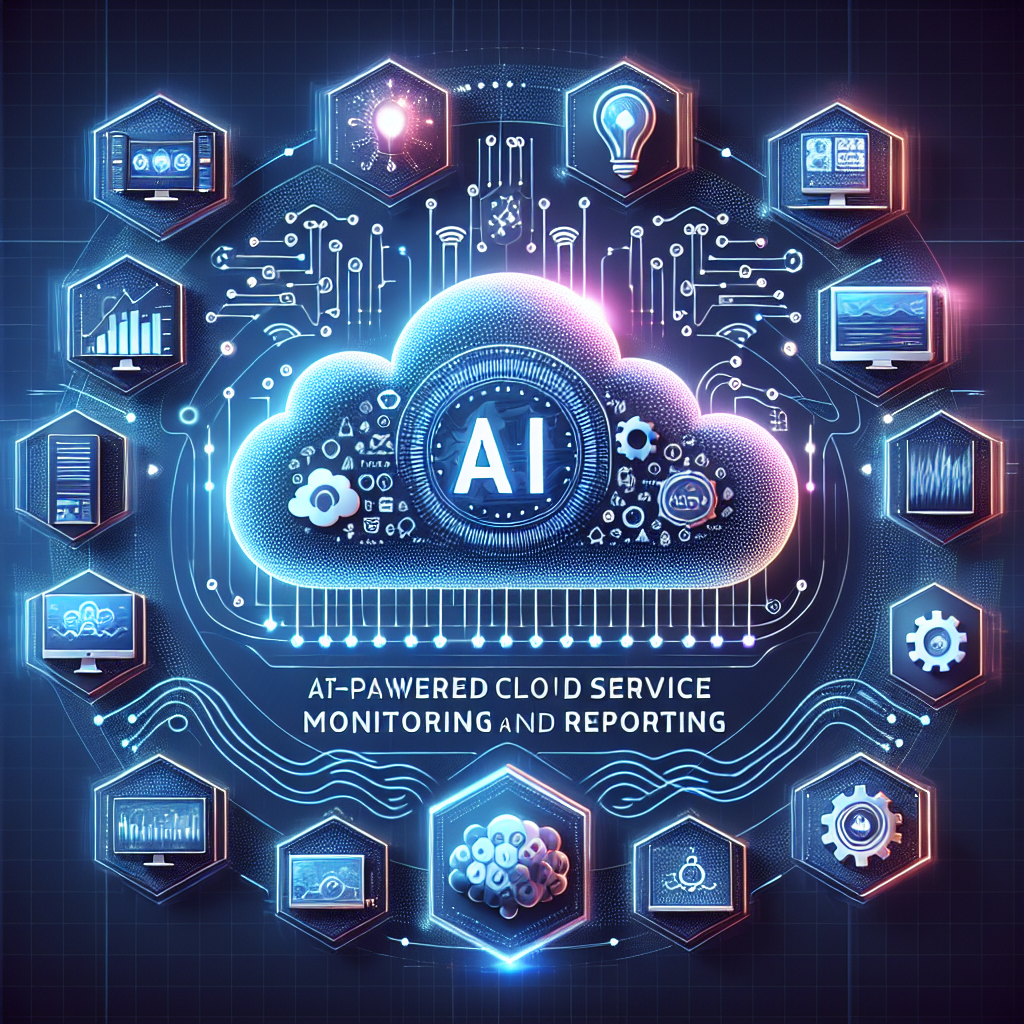AI-Powered Cloud Service Monitoring and Reporting: Enhancing Performance and Reliability
With the increasing reliance on cloud services for businesses of all sizes, ensuring the performance and reliability of these services has become a critical task. Monitoring and reporting on cloud service performance can help organizations identify issues and take proactive measures to prevent downtime and ensure optimal performance. In recent years, artificial intelligence (AI) has emerged as a powerful tool to enhance cloud service monitoring and reporting capabilities.
AI-powered cloud service monitoring and reporting leverage machine learning algorithms to analyze vast amounts of data in real-time, identify patterns, and predict potential issues before they occur. By using AI, organizations can proactively monitor their cloud services, predict potential failures, and automate remediation actions, ultimately improving service availability and reducing downtime.
Key Benefits of AI-Powered Cloud Service Monitoring and Reporting
1. Proactive Monitoring: AI-powered tools can monitor cloud services in real-time, identifying anomalies and potential issues before they impact performance. This proactive approach allows organizations to take preventive actions to avoid downtime and ensure optimal service availability.
2. Predictive Analytics: AI algorithms can analyze historical data and patterns to predict potential failures and performance issues. By using predictive analytics, organizations can anticipate problems before they occur and take corrective actions to prevent service disruptions.
3. Automation: AI-powered tools can automate routine monitoring tasks and remediation actions, reducing the need for manual intervention. Automation can help organizations improve efficiency, reduce human error, and ensure consistent monitoring and reporting across their cloud services.
4. Scalability: AI-powered monitoring tools can easily scale to accommodate the growing complexity and volume of data generated by cloud services. As organizations expand their cloud infrastructure, AI can adapt to the changing environment and provide insights into performance and reliability across all services.
5. Cost-Effective: By automating monitoring and reporting tasks, organizations can reduce the time and resources required to manage their cloud services. AI-powered tools can help organizations optimize their cloud infrastructure, identify cost-saving opportunities, and improve overall operational efficiency.
Challenges of AI-Powered Cloud Service Monitoring and Reporting
While AI-powered cloud service monitoring and reporting offer numerous benefits, there are also challenges that organizations may face when implementing these tools:
1. Data Security: AI-powered monitoring tools require access to sensitive data stored in the cloud. Organizations must ensure that proper security measures are in place to protect this data and prevent unauthorized access.
2. Complexity: AI algorithms can be complex and require specialized skills to implement and maintain. Organizations may need to invest in training and expertise to effectively leverage AI for cloud service monitoring and reporting.
3. Integration: Integrating AI-powered monitoring tools with existing cloud infrastructure and monitoring systems can be challenging. Organizations must ensure compatibility and seamless integration to maximize the benefits of AI-powered monitoring.
4. Performance: AI algorithms require significant computational resources to process and analyze large volumes of data. Organizations must have robust infrastructure in place to support AI-powered monitoring and reporting capabilities.
5. Adoption: Some organizations may be hesitant to adopt AI-powered monitoring tools due to concerns about reliability, accuracy, and trust in AI algorithms. Educating stakeholders and building trust in AI capabilities are essential for successful adoption.
FAQs
Q: What types of cloud services can benefit from AI-powered monitoring and reporting?
A: AI-powered monitoring and reporting can be applied to a wide range of cloud services, including Infrastructure as a Service (IaaS), Platform as a Service (PaaS), and Software as a Service (SaaS). These tools can monitor performance, availability, and security across all types of cloud services.
Q: How does AI improve cloud service monitoring and reporting?
A: AI algorithms can analyze vast amounts of data in real-time, identify patterns, and predict potential issues before they occur. By using AI, organizations can proactively monitor their cloud services, predict failures, and automate remediation actions, ultimately improving service availability and reducing downtime.
Q: What are the key benefits of AI-powered cloud service monitoring and reporting?
A: The key benefits of AI-powered cloud service monitoring and reporting include proactive monitoring, predictive analytics, automation, scalability, and cost-effectiveness. These tools help organizations improve service availability, reduce downtime, and optimize their cloud infrastructure.
Q: What are the challenges of implementing AI-powered cloud service monitoring and reporting?
A: Challenges of implementing AI-powered cloud service monitoring and reporting include data security, complexity, integration, performance, and adoption. Organizations must address these challenges to effectively leverage AI for monitoring and reporting on their cloud services.
Q: How can organizations overcome the challenges of implementing AI-powered cloud service monitoring and reporting?
A: Organizations can overcome the challenges of implementing AI-powered cloud service monitoring and reporting by ensuring data security, investing in training and expertise, integrating AI tools with existing infrastructure, optimizing performance, and building trust in AI capabilities through education and transparency.
In conclusion, AI-powered cloud service monitoring and reporting offer significant benefits for organizations seeking to improve the performance and reliability of their cloud services. By leveraging AI algorithms to analyze data, predict potential issues, and automate remediation actions, organizations can proactively monitor their cloud services, reduce downtime, and optimize their infrastructure. While there are challenges to implementing AI-powered monitoring tools, organizations can overcome these challenges by addressing data security, complexity, integration, performance, and adoption issues. By embracing AI-powered monitoring and reporting, organizations can enhance their cloud service capabilities and drive business success in the digital age.

